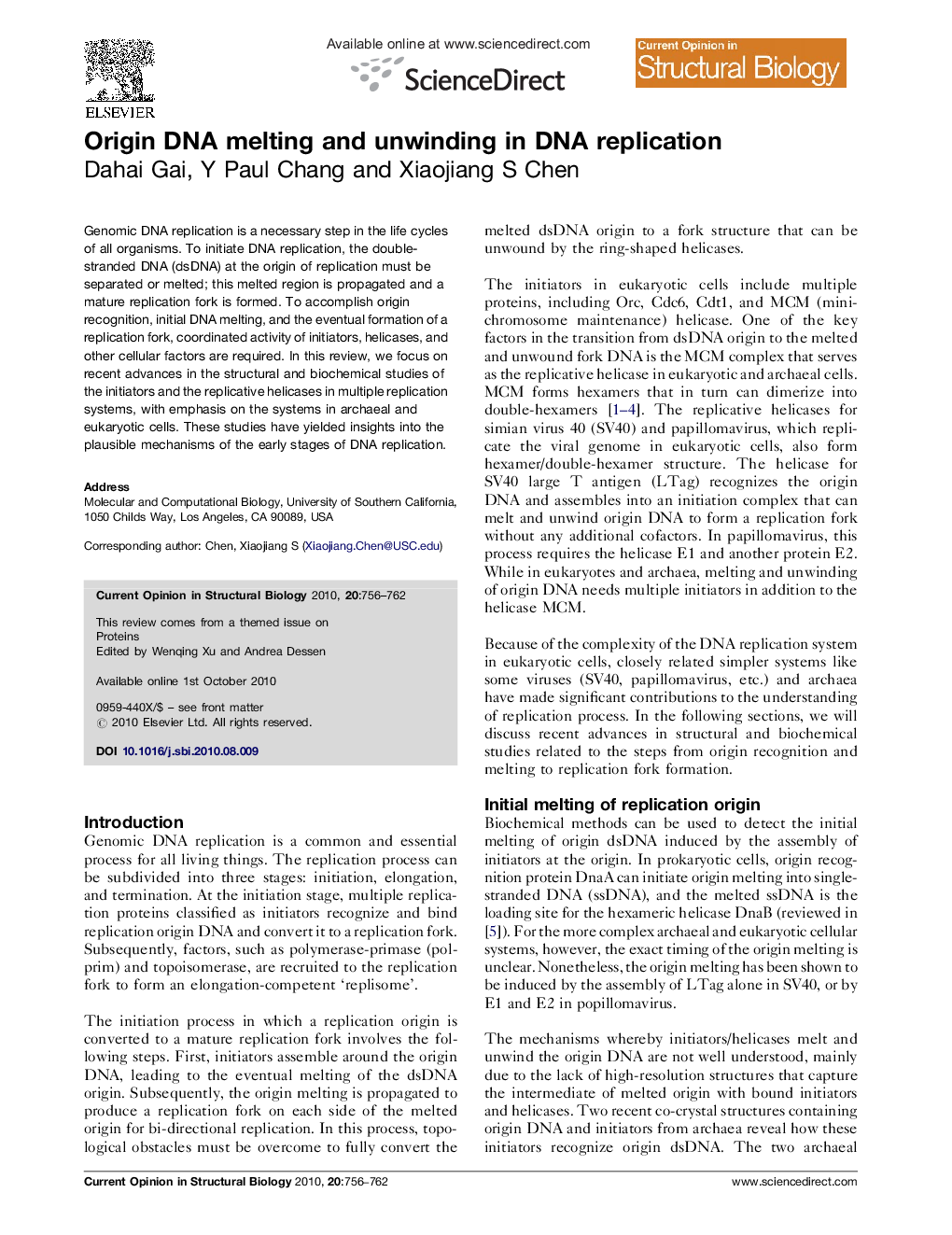| Article ID | Journal | Published Year | Pages | File Type |
|---|---|---|---|---|
| 8320293 | Current Opinion in Structural Biology | 2010 | 7 Pages |
Abstract
Genomic DNA replication is a necessary step in the life cycles of all organisms. To initiate DNA replication, the double-stranded DNA (dsDNA) at the origin of replication must be separated or melted; this melted region is propagated and a mature replication fork is formed. To accomplish origin recognition, initial DNA melting, and the eventual formation of a replication fork, coordinated activity of initiators, helicases, and other cellular factors are required. In this review, we focus on recent advances in the structural and biochemical studies of the initiators and the replicative helicases in multiple replication systems, with emphasis on the systems in archaeal and eukaryotic cells. These studies have yielded insights into the plausible mechanisms of the early stages of DNA replication.
Related Topics
Life Sciences
Biochemistry, Genetics and Molecular Biology
Biochemistry
Authors
Dahai Gai, Y Paul Chang, Xiaojiang S Chen,
